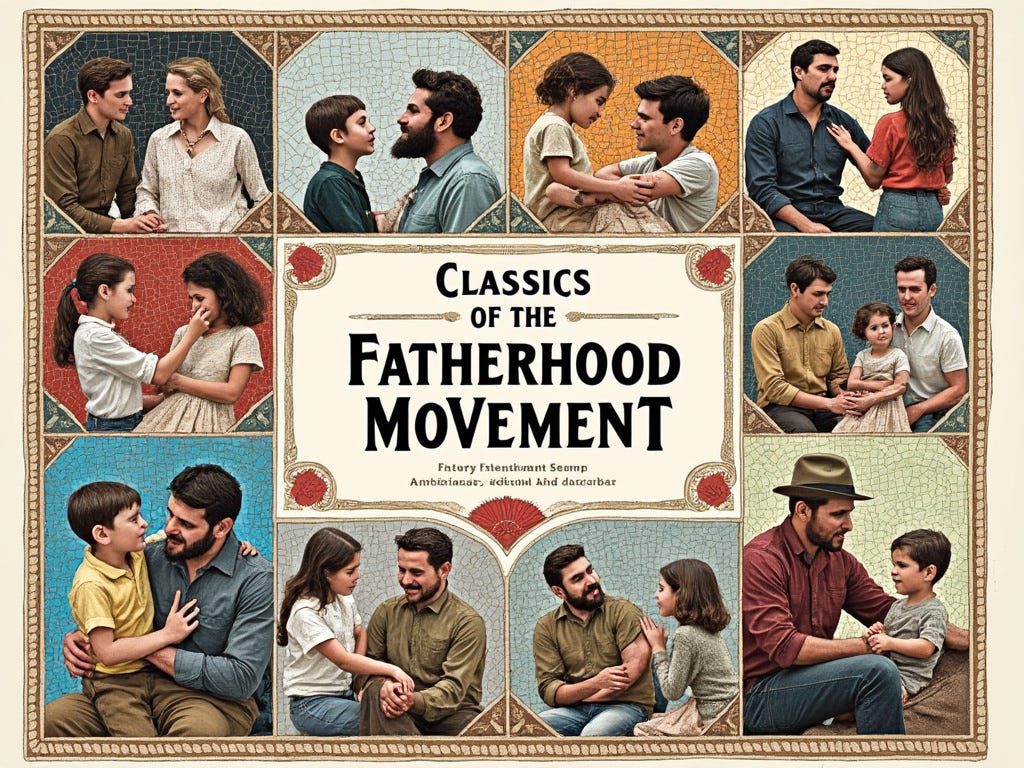Classics of the Fatherhood Movement: Who Stole Feminism by Christina Hoff Summers
To mark the 50th anniversary of the Australian Family Law Act in 2025 A Sense of Place Magazine is running this series Classics of the Fatherhood Movement.
Also, keep an eye out for the upcoming book from A Sense of Place Publishing, Failure: Family Law Reform Australia by veteran journalist John Stapleton.
Have extremists taken over? Are all men really bastards?
“Who Stole Feminism?” by Christina Hoff Sommers is a critical examination of what the author terms “gender feminism,” as opposed to “equity feminism.”
Introduction: Sommers introduces the dichotomy between equity feminism, which she supports and defines as a movement advocating for equal legal and civil rights for women, and gender feminism, which she criticizes for its radical ideologies that view society as patriarchal and oppressive towards women.
The Equity vs. Gender Feminism Split:
Equity Feminism: Sommers identifies with this form, which focuses on achieving equal rights in law and opportunity. It’s about fairness, not about changing gender roles or societal structures beyond legal equality.
Gender Feminism: This is the version Sommers critiques. It posits that women are universally oppressed under patriarchy, and seeks to dismantle not just laws, but also customs, culture, and language that allegedly keep women down.
The Rise of Gender Feminism: Sommers traces the evolution of feminism from the suffragettes and early feminists who fought for political rights, to the 1960s and 70s where the movement began to incorporate Marxist and Freudian ideas. Key figures like Kate Millett with her book “Sexual Politics” are highlighted as turning feminism towards a critique of all social relations.
Misinformation and Misandry:
Sommers discusses how gender feminists have spread what she sees as myths or exaggerated claims about women’s victimhood:
The Rape Culture Myth: Sommers argues that while rape is heinous, claims of an epidemic or culture of rape are overblown and not supported by crime statistics.
The Wage Gap Myth: She critiques the often-cited statistic that women earn significantly less than men, arguing that when factors like hours worked, type of work, and risk are considered, the gap narrows considerably.
The Education Crisis: Sommers highlights an area where she believes boys, not girls, are at a disadvantage. She discusses how the education system has become feminized, potentially to the detriment of boys, leading to higher dropout rates, lower college attendance, and higher rates of learning disabilities among boys.
The Influence of Academia: The book delves into how gender feminism has taken root in universities, influencing curricula and research. Sommers points out the proliferation of Women’s Studies programs which, she argues, often teach a curriculum that is ideologically rigid and does not encourage critical thinking about feminist theory itself.
The Impact on Society: Sommers expresses concern over how these ideologies affect policy, law, and public perception. She believes that radical feminist doctrines have led to policies that treat women as perpetual victims, potentially undermining the real progress made by feminism.
Critique of Feminist Icons: Sommers takes aim at figures like Catherine MacKinnon and Andrea Dworkin, whose works she views as extreme. She critiques their theories on pornography, sexuality, and violence, suggesting they contribute to a culture of fear and victimhood.
The Way Forward: Sommers advocates for a return to equity feminism, emphasizing individual rights and responsibilities rather than collective victimhood. She calls for an honest dialogue about gender issues, suggesting that modern feminism has lost its way by focusing on gender as a primary category of oppression over other considerations of race, class, or individual merit.
Conclusion: “Who Stole Feminism?” is Sommers’ appeal for a reevaluation of what feminism has become. She believes that the movement has been hijacked by a version that not only misrepresents the state of gender relations but also potentially harms both men and women by pushing for solutions to problems that might not exist or are exaggerated.
Sommers’ work has been both praised for its critique of what she sees as ideological excesses in feminism and criticized for potentially downplaying or ignoring legitimate issues facing women. The book sparked considerable debate on what feminism should represent in modern society, advocating for a feminism that seeks equality through law and opportunity rather than through the deconstruction of societal norms and structures.
CLASSICS OF THE FATHERHOOD MOVEMENT
CLICK ON THE IMAGE BELOW TO SEE THE SERIES SO FAR
OUT SOON
MARKING THE 50TH ANNIVERSARY OF THE AUSTRALIAN FAMILY LAW ACT










